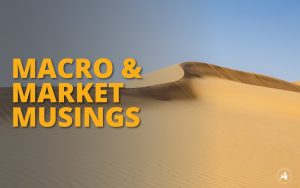Comments based on information available as of 6:05am CT on 8/29/2025
Growth: “Beat and Raise” Momentum 
Earnings season is nearly over, and the results have been encouraging. According to FactSet, 81% of S&P 500 companies exceeded earnings expectations, and 58% raised their guidance for full year 2025 earnings. The phrase “beat and raise” has been music to investors’ ears. Not only have corporate earnings outperformed, but economic data has also surprised to the upside, most notably this past week, the second-quarter GDP growth rate was revised higher. Much of that revision was driven by increased business investment. While consumer spending remains the primary engine of economic growth, business investment is poised to continue making a meaningful contribution.
Inflation: More Than Just Tariffs
Tariffs aren’t the only factor driving consumer prices higher. Spending on goods is only 31% of consumer expenditures with the rest being services. Some of those services are trade-sensitive, but goods tend to be more affected by tariffs than services. The Federal Reserve Bank of Boston has estimated that only 10% of core goods consumption (which excludes food and energy) is directly or indirectly imported. Tariffs are important, especially for temporary changes in inflation, but the longer-term direction of inflation is driven by much more than tariffs.
Policy: Appointees Aren’t Always Allies
Monetary policy is shaped by a committee, not a single individual. Even if President Trump replaces two Governors on the Federal Reserve Board, that doesn’t guarantee he will control policy decisions. The Fed’s independence is much bigger and more robust than just a few individuals. Being appointed by the President doesn’t mean being aligned with the President, especially after getting in the position. Powell, for example, was appointed Chair by Trump in 2017, but it would be a stretch to consider him an ally. Just because Governors Waller and Bowman were appointed by Trump doesn’t mean they won’t exercise their independent judgment. Moreover, the Board only holds seven of the twelve votes on the Federal Open Market Committee, so broader changes that Congress would have to go along with would be needed to undermine the independence of the Fed.
Looking Ahead: Two Types of Inflection Points
Investors often look for inflection points—moments when earnings growth increases. But there’s another kind: when growth slows. We may be seeing signs of this in semiconductor spending. Still, these shifts aren’t necessarily cause for concern if they’re widely anticipated. For example, a slowdown from 100% growth to “only” 50% can still be healthy if it was anticipated by investors. It’s surprises and shocks to the outlook that matter most.